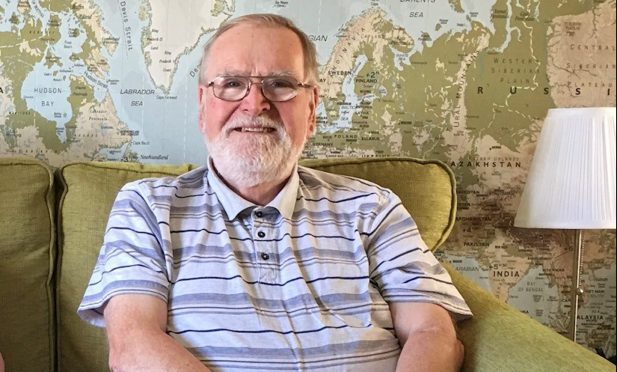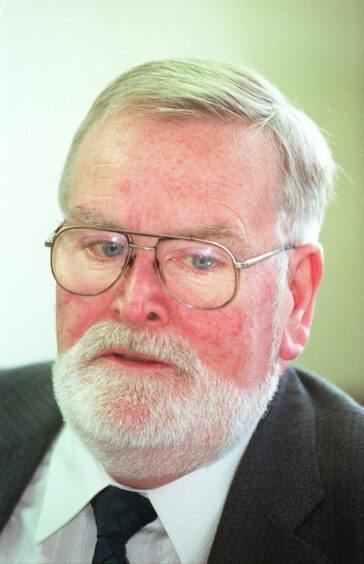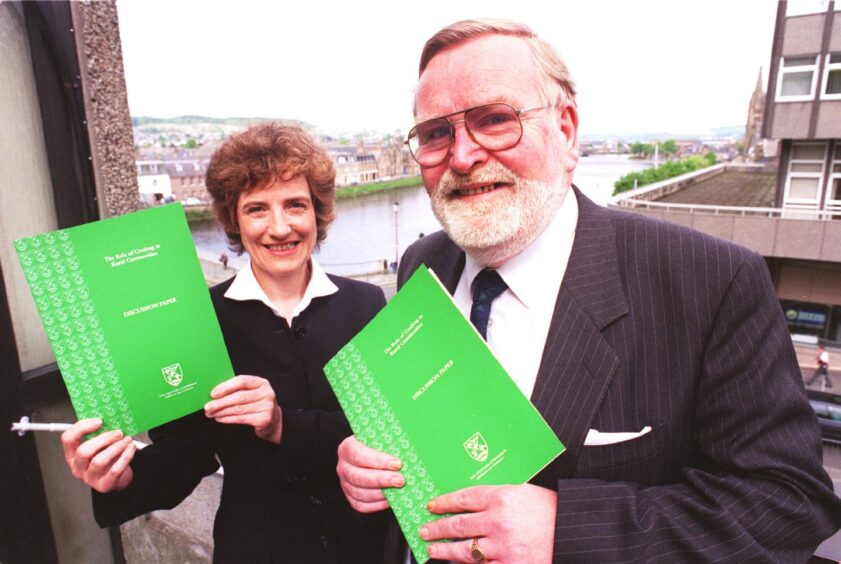Iain MacAskill OBE, former secretary of the Highlands and Islands Development Board, Gaelic champion and past chair of the Crofters Commission has died aged 84.
The father-of-three who also worked for Highlands and Islands Enterprise notably commissioned Cor na Gàidhlig – the influential 1982 report behind the development of the modern Gaelic movement.
Glasgow born, Highland-hearted
Son of piper Alexander MacAskill and Lexy MacKillop, Iain’s early days were spent at the family home in Argyle Street, Glasgow, where he was born on May 18 1939.
Named after his uncle, Berneray bard John Archie MacAskill, Iain moved with his family to Loch Portain, North Uist in childhood. Brother of well known Fort William GP, Scotland football team doctor and piper John Napier MacAskill, Iain returned to Glasgow to study accounting at university, before returning north to Inverness for all of his working life.
Highlands and Islands Development Board
In 1965 the Highlands and Islands Development Board (HIDB) was established. Iain was sent shortly after to set up the organisation’s finance department. By November 1975 he had taken on the role of secretary and despite chairmen coming and going Iain was one of very few constants in the Board’s often tumultuous history.
As part of his remit with HIDB in the early 80s, Iain commissioned the Cor na Gàidhlig (Gaelic character) report. The 110-page document into planning for the future of the Gaelic language and its development is credited with laying the foundations of many modern Gaelic initiatives such as Pròiseact nan Ealan (the Arts Project) and Sabhal Mòr Ostaig (The Big Barn at Ostaig), now part of the University of the Highlands and Islands.
He was also involved with establishing Comunn na Gàidhlig (the Gaelic Society), the fore-runner of Bòrd na Gàidhlig (the Gaelic Board). Iain also chaired many Gaelic organisations including MG ALBA, the Gaelic television service.
Switching to Highlands and Islands Enterprise (HIE) in 1991 at its inception, he was later appointed Head of European projects.
Days of great change
Dr Hugh Dan MacLennan, a great friend of Iain’s, paid tribute to “a great and a good man”, a “towering figure in the development of the Highlands.”
He added: “Iain’s contribution to the development of the Highlands and Islands was unique.
“He was a visionary who chose his lieutenants well, sending them out into Gaelic communities, setting up projects such as the Co-Chomainn (Community Co-ops). Though some never survived, many went on to spawn off-shoots and further developments.
“He was instrumental in setting up schemes to assist fishermen and a chain of hotels along the west coast.
“While not everything worked, they were heady days in terms of change.”
Future perspective on crofting
In 1995 Iain became chair of the Crofters Commission.
During his tenure the croft entrants schemes, run in partnership with HIE, saw local investment of more than £3million. He also lobbied for the Crofters Building Grants and Loan Scheme to come under the authority of the Crofters Commission rather than the Scottish Executive.
Championing the involvement of crofters in legislative change was more than just a task for Iain. Seeing the potential for it to shape the future of land ownership in Scotland he was reported to say “the entire process of land reform is a huge opportunity for crofting and rural communities. The most important change will be the new legislation from which everything else will flow.”
Iain was made OBE in 2001 for services to the Highlands and crofting.
‘Few could lace his boots’
Hugh Dan McLennan added: “Above all of that Iain was a champion of Gaelic, arguably its most significant individual of the second half of the 20th century.
“He will be greatly missed by everyone who knew him and enjoyed his company. A man who enjoyed the companionship of fellow-Gaels and others, and never ever sought the limelight. Unbeknown to many, he was a very keen curler and enjoyed his time on the ice at Inverness.
“We walk in his shadow, but few of us could lace his boots. We have lost a great friend and outstanding man of the people.”
Later years
Iain moved to Skelmorlie, North Ayrshire when he retired, enjoying his days watching CalMac ferries going between the Isle of Bute and the mainland. He and his wife Jean also travelled the world, cruising and visiting their son in Australia regularly.
Rarely ill throughout his life, he was diagnosed with dementia in latter years.
He died peacefully in Marino Court Care Home in Greenock on Monday December 11.
Survived by his wife of 58 years, Jean, and his three children: Alistair, Jean and John, he will be deeply missed by all who knew him.
Proud grandfather to his eight grandchildren and four great-grandchildren, his funeral will take place on Friday December 28 at Greenock Crematorium at 11am.


